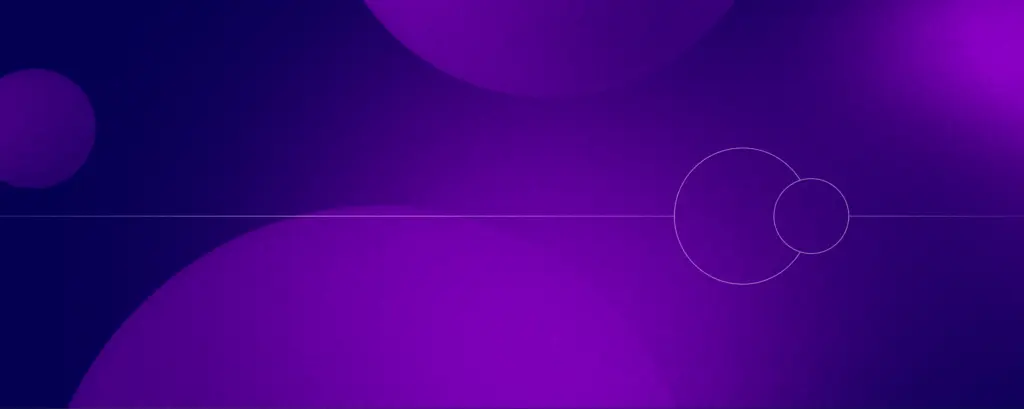June 17th, 2019 | by Radosław Szmit
Design Thinking: The Way for IT and Beyond

Table of contents
We’re not calling it ‘The Only Way’ as that would not be accurate. But it’s certainly an important angle for tackling problems when designing products or services. Engineers, designers, psychologists and marketeers – all come together to solve problems at an early stage to devise the best solution possible. Design thinking is not about making money, it’s about creating innovative products and services based on a deep understanding of users’ and customers’ needs.
The most noticeable father of design thinking is David M. Kelley. He’s an engineer who started out working for Boeing and NCR (National Cash Register). Through his whole career he was a designer, witnessing the implementation of processes in order to create new and exciting products. He wasn’t especially impressed by the way things were done. That’s why he invented a method to deal with solutions, that are not perfect and do not respond well to changes in the design and production process.
The old model of cooperation between a designer and a customer is based on the assumption that a tech company walks into the office of a design company and asks for a complete package. One that is not only functional and easy on the eyes, but also sells the product. As it happens, designers often had a list of breakthrough ideas about the functionality of the entire device, but it was too late to change anything. This frustrating situation led to the creation of a method that revolutionized the tech as we know it.
The birthplace of design thinking was Stanford University in California. It’s there that David M. Kelley and few other visionaries worked on a transfer of creative ideas and innovative methods to the environment of entrepreneurs of Silicon Valley. Then 1991 came and the company IDEO was born. This is a vehicle for engaging designers as early as possible, even at the concept stage, to make sure that more innovative solutions are made for the project. IDEO does not work solely on design – the company is known for hiring over 550 specialists in fields like business and strategy consulting, innovation, sales, marketing and communication.
All these work together to make sure that every project receives a holistic and complementary approach. To date IDEO has 9 offices across the world; it also served as a seed from which the d.school (Institue of Design) at Standford bloomed. This interdisciplinary design lab lets students develop projects for companies, foundations and local communities. All in the spirit of design thinking, naturally.
But what is the exact nature of ‘design thinking’? For whom it is, where can it be implemented, what stages on the road to the implementation are there and, finally, what is the lasting effect?
For whom is design thinking?
Though beneficiaries vary, design thinking can be helpful to virtually anyone. From smaller companies to corporations, from schools, non-government organizations (NGOs) and foundations to all groups that seek innovation. Not through copy-paste, imitate and innovate model, but through honest research and implementation of innovative solutions based on the deep understanding of end-users’ needs. Anyone with money, time and expertise can make a good product; very few can make it stand out through deep acumen of user’s condition.
Places of implementation
Through its universality, design thinking has a broad spectrum of situations where it can be utilized. It’s best for challenges that don’t have one good solution, for issues particularly complicated, that require involvement of various specializations. Technology, design, ergonomics, psychology, business – all have a place here.
Good exemplary questions for design thinking would be:
- How to improve the experience of using a TV remote?
- What is the cause for customers for abandoning our product line, despite our products being very similar to the competitor’s?
- How to sustain the temperature of a newborn under field conditions?
Stages of design thinking
There are five stages of design thinking:
Empathize – The very first thing to do, if you want to succeed. You need to empathize with people having a particular problem. By understanding their past experiences, motivations and current situation, you’ll be able to set up a groundwork for a change. It’s also important to suspend your own world view for a moment and experience the world through the eyes of people you are helping. It’s called ‘empathize’ for a reason. 😉
Define (the problem) – In the first stage you acted in a ‘listening mode’ – now it’s time to act for real. It’s about analyzing and synthesizing gathered information and defining the core problem. Once you’ll do that, your team can draw from your findings and establish a list of features, functions and further questions to implement and advance the project.
Ideate – This is the phase during which your team will generate multiple ideas, have creative arguments and pitch solutions to tackle old ways of thinking. It’s all about free-thinking and looking for inspiration outside the box. The more ideas for the problem you’ll generate, the better. It’s important to have alternatives and different views; that’s how true innovation is born.
Prototype – This is an experimental phase during which you’ll produce scaled-down models of the solution and test them. The goal here is to have a number of inexpensive and small models, replicating the flaw and incorporating a solution to test what works and what doesn’t. It’s a great and safe ‘room’ for mistakes. Teams can also share prototypes with other groups in your organization or even outside it, expanding the field of possibility for a solution. By the end of this stage, the design team will have knowledge about what users experience when interacting with the product. They will know what they think and how they feel.
Test – This is the room for final conclusions. Even this phase can be used to push for new ideas and entire solutions to the problem since iterations are a part of design thinking’s DNA. More so, the ‘final’ part is not always fitting and predicted, since earlier phases of the cycle can be repeated (right down to the first one) to make sure the team got everything right and the solution truly works under different environmental conditions and usage scenarios.
The Lasting Effect
When we think about it, there are two major goals of using design thinking methodology. The first and more obvious one is innovation. Innovative products simply work and look better. They are more cost- and energy- effective. They are also a vital part of a company’s image.
That’s not all – design thinking can also work as a space to develop better processes, strategies, learning and business models. That gives the potential to transform not only business but also society.
The human-centric and hands-on approach is characteristic for design thinking, but naturally, not exclusive to it. Nonetheless, they have, especially when combined, a unique way of expanding the knowledge about the team behind the product, the product itself and even the customer base.
Design thinking greatly oversimplifies the process behind the solution but in doing so, it makes it more digestible for all to experience and understand. This is an invitation to become a part of the solution. Generating ideas is based on a few simple rules: brainstorming welcomes all, even most crazy ideas. Participants are not supposed to be judgemental; instead they are open to building on the ideas of others, not glued to their own notion and not fixated on limitations. And it works; design thinking is utilized by IBM, Marriott, SAP, Lego, General Electric and many, many others.
Participants of design thinking sessions, implementing their wisdom, are far more responsive and ready for challenges ahead. And speaking of which… more about the responsive approach in the days to come. A new international idea with big potential is just around the corner. We are a part of it here at CSHARK and can’t wait to share the details.


